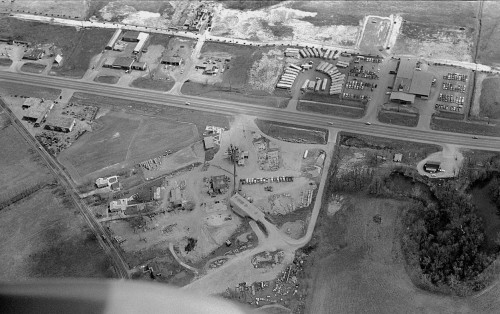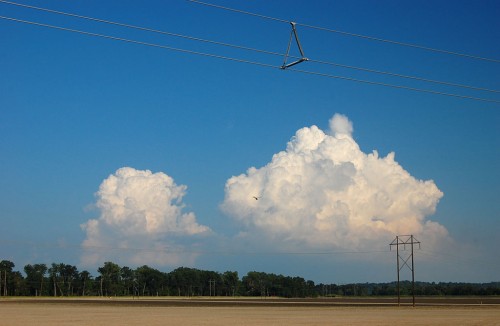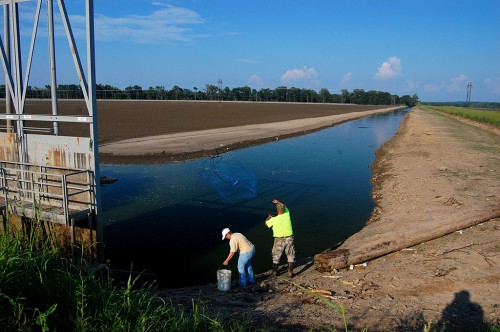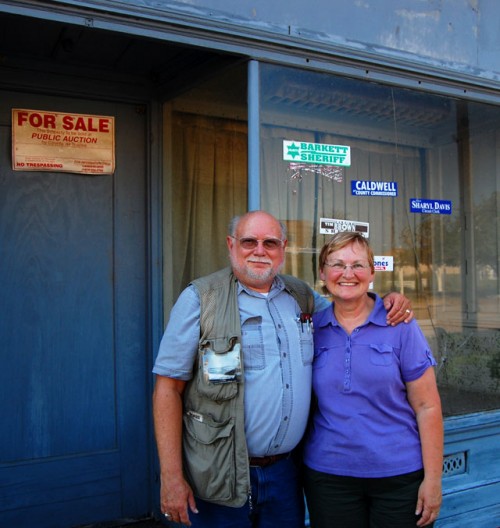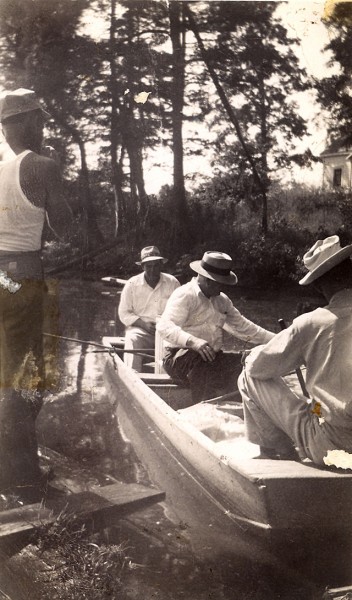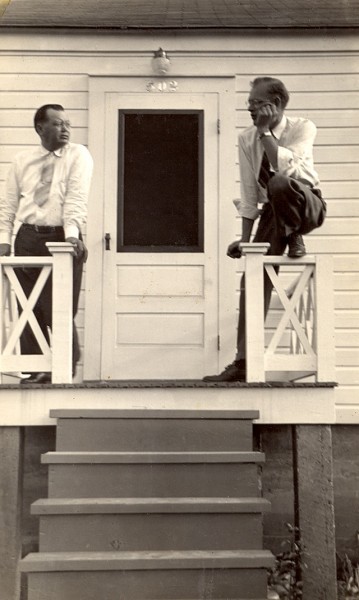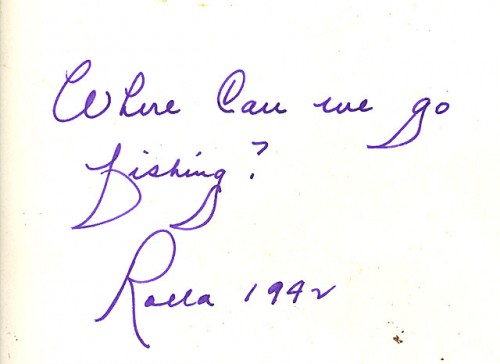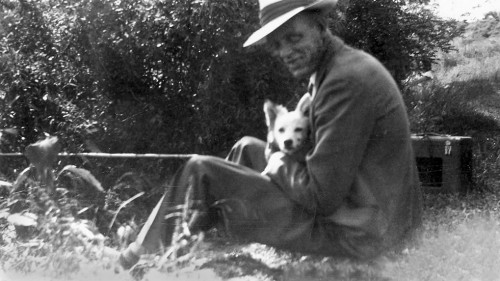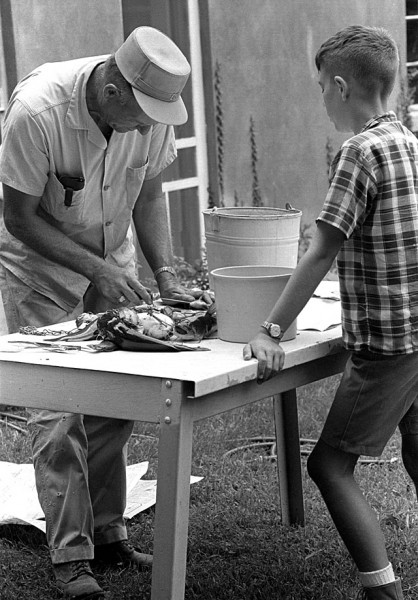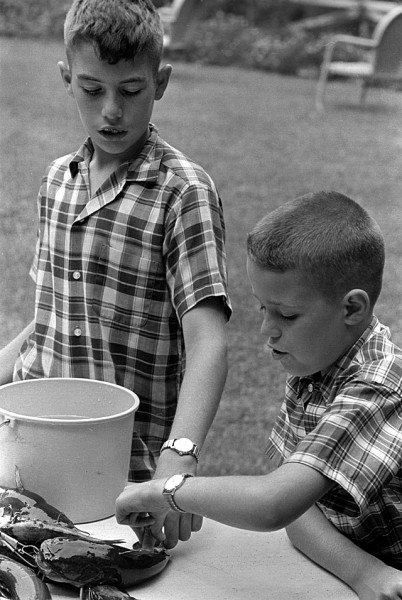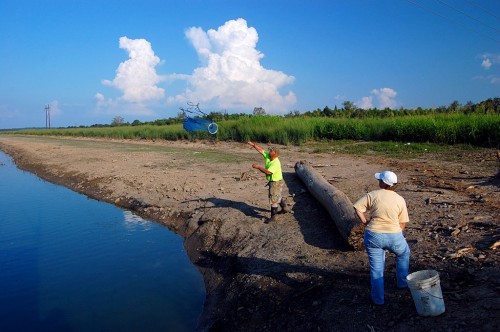 After seeing that the flooding had gone down, I decided to drive down Old Highway 61 that parallels I-55 south of Sprigg Street and ends at a boat ramp. After taking a scenic photo, I noticed a couple throwing a cast net. [Click on any photo to make it larger.]
After seeing that the flooding had gone down, I decided to drive down Old Highway 61 that parallels I-55 south of Sprigg Street and ends at a boat ramp. After taking a scenic photo, I noticed a couple throwing a cast net. [Click on any photo to make it larger.]
Aerial of Diversion Channel
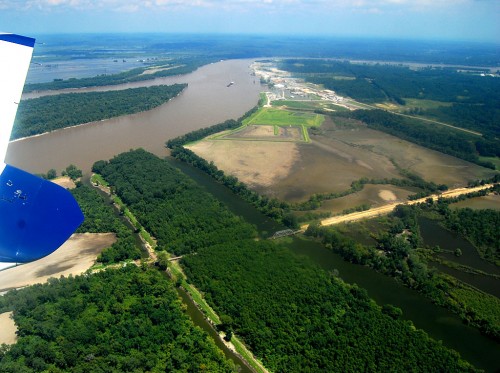 Ed and Melinda Roberts of Jackson were trying to snag enough bait to put out two trotlines where the Mississippi River meets up with the ditch that is just north of the Diversion Channel. Ed Calls it the North Cut Ditch. I’ve heard it called the Little Ditch and at least one topographic map labels it the Dutchtown Ditch.
Ed and Melinda Roberts of Jackson were trying to snag enough bait to put out two trotlines where the Mississippi River meets up with the ditch that is just north of the Diversion Channel. Ed Calls it the North Cut Ditch. I’ve heard it called the Little Ditch and at least one topographic map labels it the Dutchtown Ditch.
I was able to snap a picture of the Diversion Channel and the North Cut from the Cape Air Flight I was on. The Channel is on the right, the larger of the two canals.
“It’s all about stuffing the freezer”
Ed is a guy who fishes for the fun of eating fish. “I hope to have 400-500 pounds of fish in the freezer before the season is over. It’s all about stuffing the freezer.” Most of them will be channel catfish or blue cats. His biggest catch was an 82-pound blue on a trotline. “I WISH I had caught it on a rod.”
Enough bait to do the job
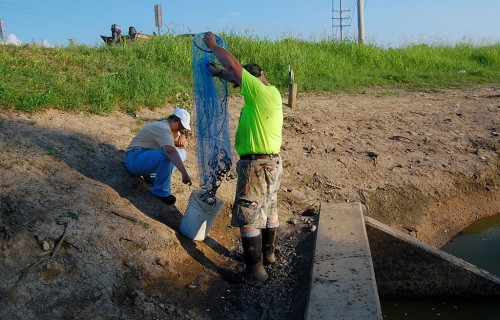 The water was boiling with fish, mostly gars, which the couple tossed up on the bank to join dozens more. “Most of them were killed by bow hunters,” he said. After about half a dozen casts, he brought up enough bait to do the job.
The water was boiling with fish, mostly gars, which the couple tossed up on the bank to join dozens more. “Most of them were killed by bow hunters,” he said. After about half a dozen casts, he brought up enough bait to do the job.
Heat killed many fish
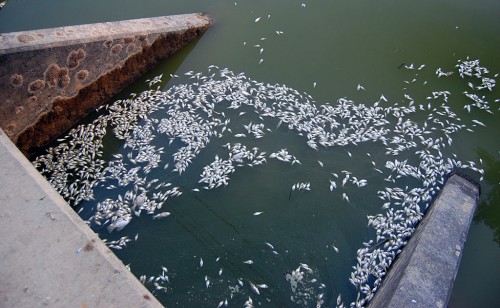 “I’ve never seen shad die like this in the summertime. It’s the heat that’s killing them,” he explained. The hot water also limits how deep he can set his lines.
“I’ve never seen shad die like this in the summertime. It’s the heat that’s killing them,” he explained. The hot water also limits how deep he can set his lines.
Nature’s cleanup crew
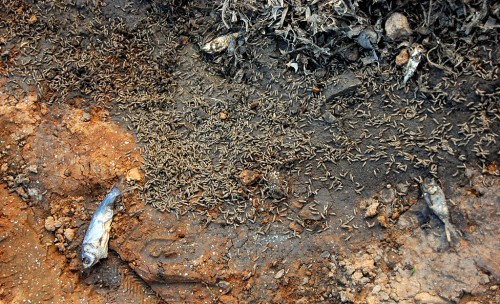 Maggots are hard at work cleaning up anything edible left behind by the flood and fishermen. “It’s a good thing,” Ed said.
Maggots are hard at work cleaning up anything edible left behind by the flood and fishermen. “It’s a good thing,” Ed said.
Launching the boat
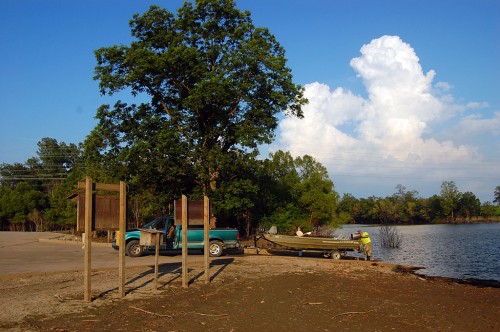 When I asked if I could follow them down to where they was going to put the boat in the water, ED offered me something better: a ride to watch them put out the lines.
When I asked if I could follow them down to where they was going to put the boat in the water, ED offered me something better: a ride to watch them put out the lines.
Video: how to set out a trotline
Here’s your opportunity to see how to set out a trotline.
Motor wasn’t running right
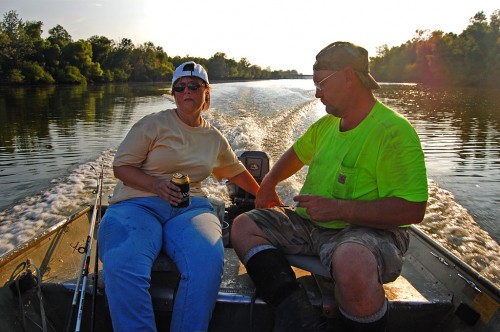 When we started out, the motor was missing and sputtering. I wondered if they had invited me along to be a galley slave if the engine conked out. Ed assured me that wasn’t the case. He said that a plug was fouled and he wouldn’t go far from the ramp until he had it cleared.
When we started out, the motor was missing and sputtering. I wondered if they had invited me along to be a galley slave if the engine conked out. Ed assured me that wasn’t the case. He said that a plug was fouled and he wouldn’t go far from the ramp until he had it cleared.
Headed out the Diversion Channel
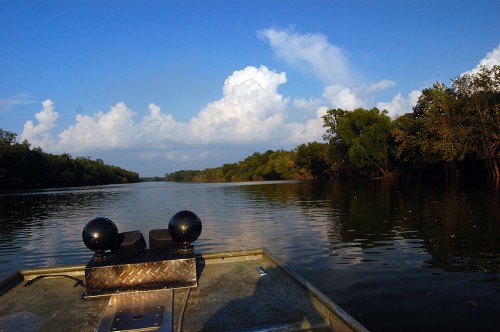 Before long, we were headed out the Diversion Channel to meet the Mississippi River. I’ll run scenic shots from the ride another day. I always thought of the Channel as a sterile ditch, but it’s a beautiful waterway with interesting trees on both sides.
Before long, we were headed out the Diversion Channel to meet the Mississippi River. I’ll run scenic shots from the ride another day. I always thought of the Channel as a sterile ditch, but it’s a beautiful waterway with interesting trees on both sides.
Northbound on the Mississippi
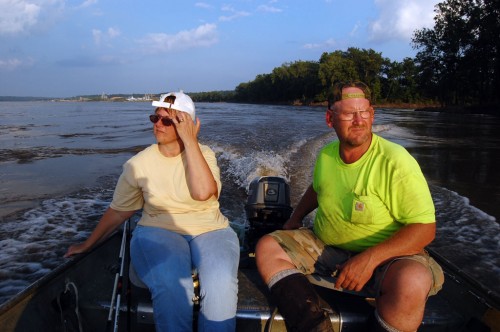 Before long, we were northbound on the river. The boat felt a lot smaller out there.
Before long, we were northbound on the river. The boat felt a lot smaller out there.
Checking out the motor
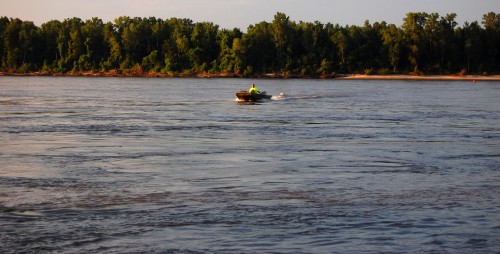 When we got to where he was going to set his lines, he still wasn’t happy with the way the motor was running, so he left Melinda and me on the bank while he did a high-speed run in the river until he was satisfied.
When we got to where he was going to set his lines, he still wasn’t happy with the way the motor was running, so he left Melinda and me on the bank while he did a high-speed run in the river until he was satisfied.
Baiting the hooks
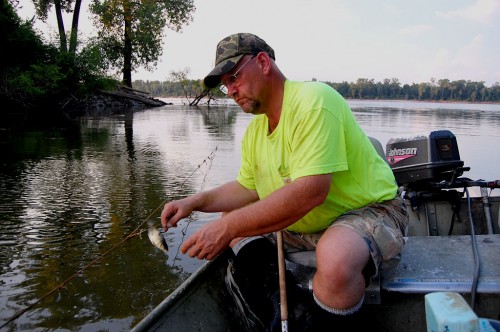 I couldn’t shoot both stills and video at the same time, so you’ll have to watch the video if you want to see what’s involved in setting a trotline. Here he is baiting one of the hooks with a fish he caught when we first met. If he’s in the river, he’s permitted to have 50 hooks; if he’s fishing in the ditches, he can have a maximum of 33.
I couldn’t shoot both stills and video at the same time, so you’ll have to watch the video if you want to see what’s involved in setting a trotline. Here he is baiting one of the hooks with a fish he caught when we first met. If he’s in the river, he’s permitted to have 50 hooks; if he’s fishing in the ditches, he can have a maximum of 33.
Getting close to sunset
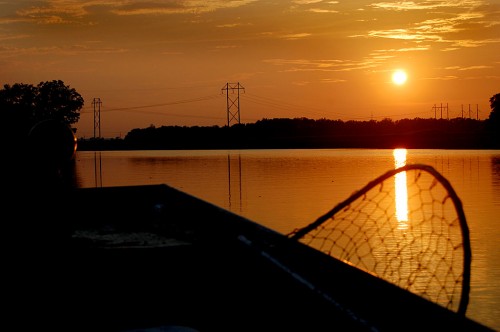 Ed was starting to run out of daylight, so he decided not to set out both lines. When we pulled into the bank, I asked what time the mosquitoes would show up. “I’ve got pepper spray, so I can hold ’em off for a little while while you make a run for it,” I offered.
Ed was starting to run out of daylight, so he decided not to set out both lines. When we pulled into the bank, I asked what time the mosquitoes would show up. “I’ve got pepper spray, so I can hold ’em off for a little while while you make a run for it,” I offered.
Ed and Melinda assured me that they had plenty of bug repellent, but Ed said he’d run me back to the ramp before it got dark. They planned to stay a good part of the night running the line about every two hours and fishing with a rod and reel in the meantime.
It was a great experience. There’s a lesson here: you sure meet some nice people if you just get out of your steel cage from time to time and talk to the folks you come across. When I woke up that morning, I never dreamed that I’d end the day in a small boat on the Mississippi River.

